Last year I wrote a short piece for 35mmc as part of the “5 frames with” series. The camera I used was my Nikon Fm3a with the Nikkor 50mm f1.2 AIS lens- a combination that I just adore.
During the writing of it, I realized that if I could only have one camera and one lens forever, then this would be it. I also shoot with a Leica M7, a Contax Rts ii , an Olympus Om2 and a whole load of other medium formats and compacts. And I love them all to bits, but for me, Nikon Fm3a just nails everything beautifully and I’ve found myself using it more and more as my main go-to street portrait camera- which has upset the Leica somewhat.
Hamish asked me to expand on my thoughts on the Nikon FM3a, so this piece is just that. The proof is in the pudding so I will fill this post with lots of pictures too, showing results for different film stocks.
The pics you’ll see come from the Nikkor Series E 28mm f2.8, The Micro Nikkor 55mm f2.8 and the majority come from the Nikkorn 50mm f1.2 Ais. Please click on the pictures to see them in a larger format.
Before we get into it:
This is a personal piece about me, my work and the camera I use for it. There are lots and lots and lots of cameras out there that can do the same thing as this camera. I am not claiming that this is the best camera in the world- but is is for me (so far). So for the pedants and spec freaks out there, I am aware that ALL CAMERAS MATTER. But today, I am talking about THIS camera. So if you respond with a “well, actually, the Nikon F whatever performs the same functions at a fraction of the cost with interchangeable screens, or “My Spotmatic is technically superior in brassing terms” or any of that guff, you’re missing a very simple point and I’ll ignore you. There are plenty of tech reviews and comparison Specs sites for you to drool over out there, so please knock yourself out. I write personally and passionately, for people enthusiastic about cameras AND about taking pictures with them. So relax and enjoy it or scroll on.
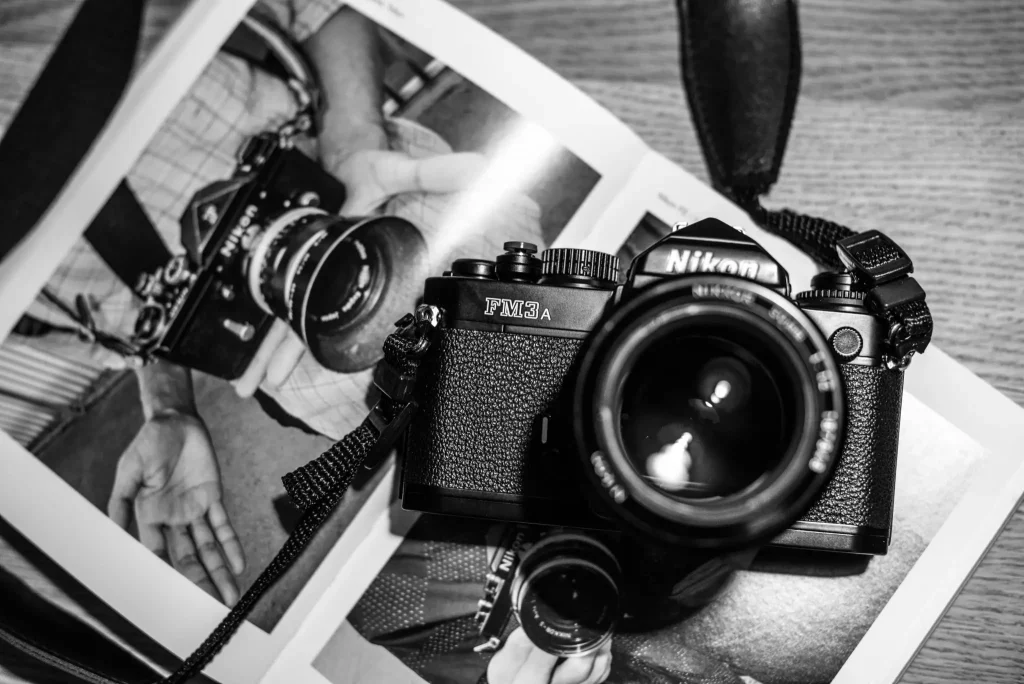
A beautiful camera, and a fitting end to Nikon’s legacy
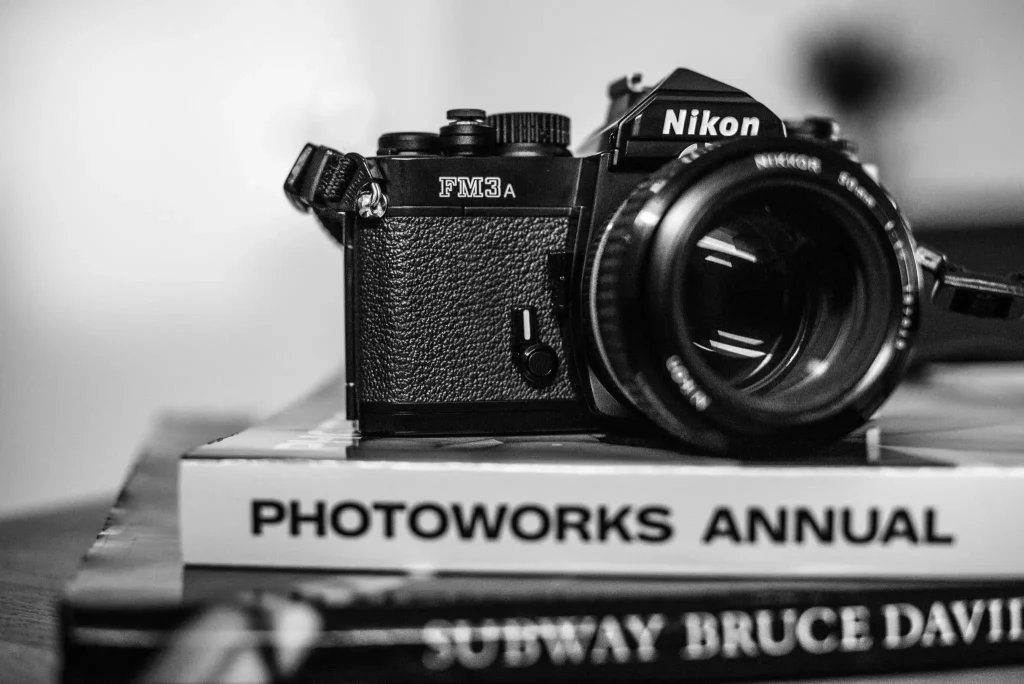
The FM3A does everything I want an SLR to do
The Camera
The Nikon FM3a is the last fully manual capable 35mm slr that Nikon produced, manufactured between 2001 to 2006, coming in all black and satin chrome. It’s the successor to a line of semi-pro slrs that Nikon made from the late 70s- the FM, FE, FM2 & FE2 (lots of F’s, just to confuse you a bit)
Film SLRs then started to go all autofocus and electronic, and that started to piss off the pro’s, so the FM3a was designed in response to a professional demand for a more reliable camera- something without autofocus and unnecessary electronics, but with a build quality that was precise and durable- and with the prized AE function of the discontinued FE2.
The Nikon FM3a was designed to be something built to last. Built to the highest possible quality and designed to last decades. It was Nikon’s mechanical swansong, flying in the face of the digital dawn- a love story to Nikon’s unique position in camera history.
Sadly, its inception coincided with the rise of digital photography, so it ceased production in 2006, but its legendary build quality has resulting in its second hand price staying close to its original value (especially the black models, because we all know that black cameras take better pictures)
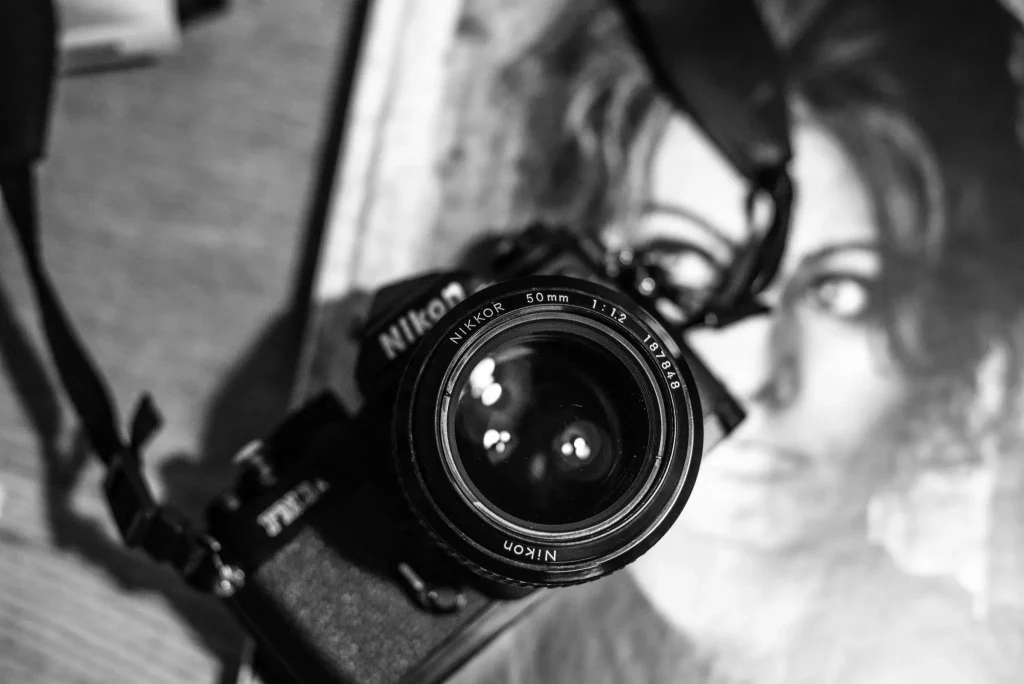
The Nikon Fm3a has a wonderful feel that traverses the decades and takes the best from them
Shooting the Nikon FM3a
I love the “old & new” features in this camera- it looks classic but feels like a new hi-tech piece of kit. Nothing clunky about it at all.
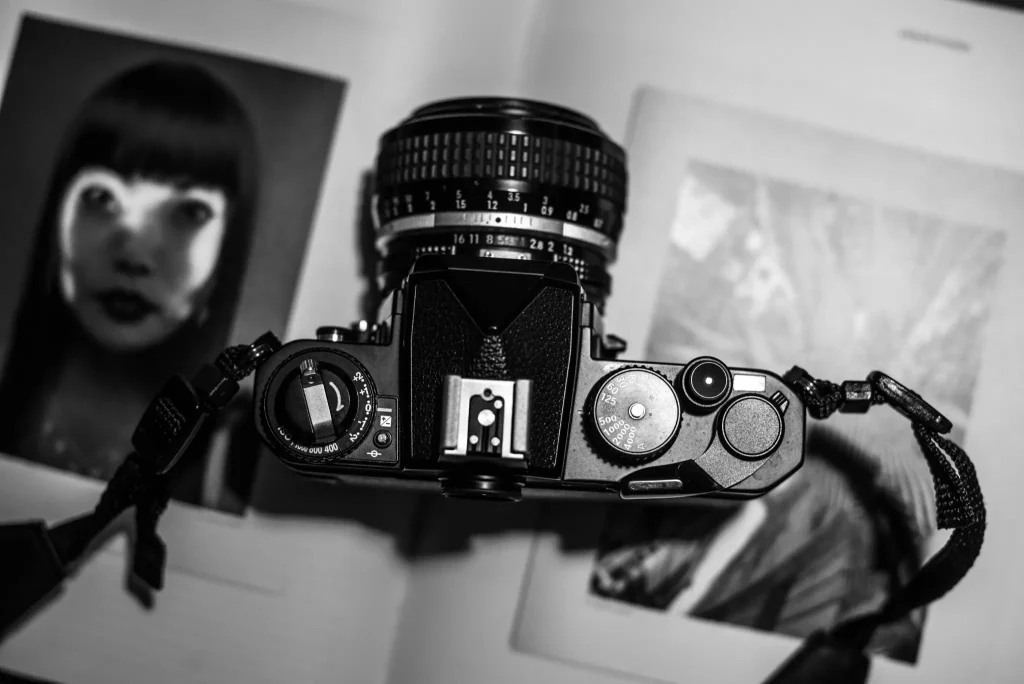
The dial on the left allows iso selection as well as exposure compensation.
DX
The Nikon Fm3a takes DX coded film from iso 25 to 5000 but you can also override the DX coding and enter your own settings on the dial from iso 12 to 6400, giving you lots of creative options.
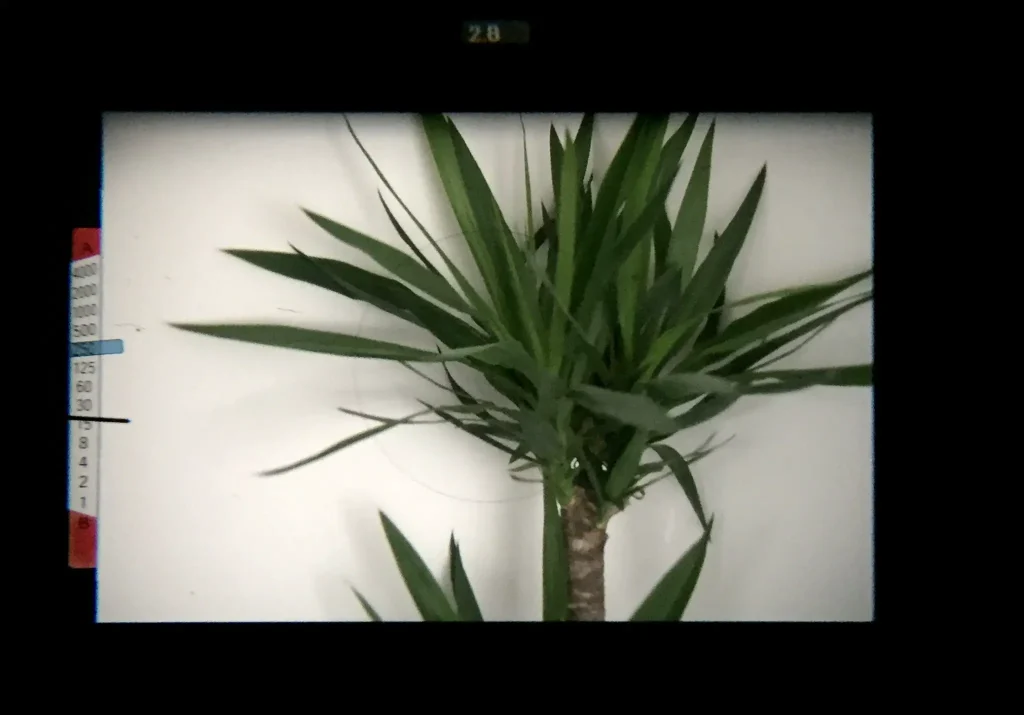
A look through the elegantly simple viewfinder reveals the match meters on the left plus a neat little top window that shows the aperture reading on the lens
EXPOSURE
The Nikon Fm3a provides a choice of manual exposure or aperture priority- along with an exposure lock button which you can hold down to remember settings and reframe as you wish. To see your exposure you half-press the shutter button and look inside the viewfinder to see the reading.
In the viewfinder window, there is a classic looking blue match needle meter on the left of the display showing your chosen shutter speed. The black needle indicates whether your chosen aperture (visible via a little window in the top of the viewfinder) will over or under expose the shot. By turning the aperture ring (or changing shutter speed) to match the needles, you will get a well exposed shot.
In Aperture priority mode, the Nikon Fm3a only shows the shutter speed your camera will shoot at based upon your chosen aperture setting. By changing aperture, the shutter speed needle will move up and down accordingly to show the speed it will shoot at to get the right exposure.
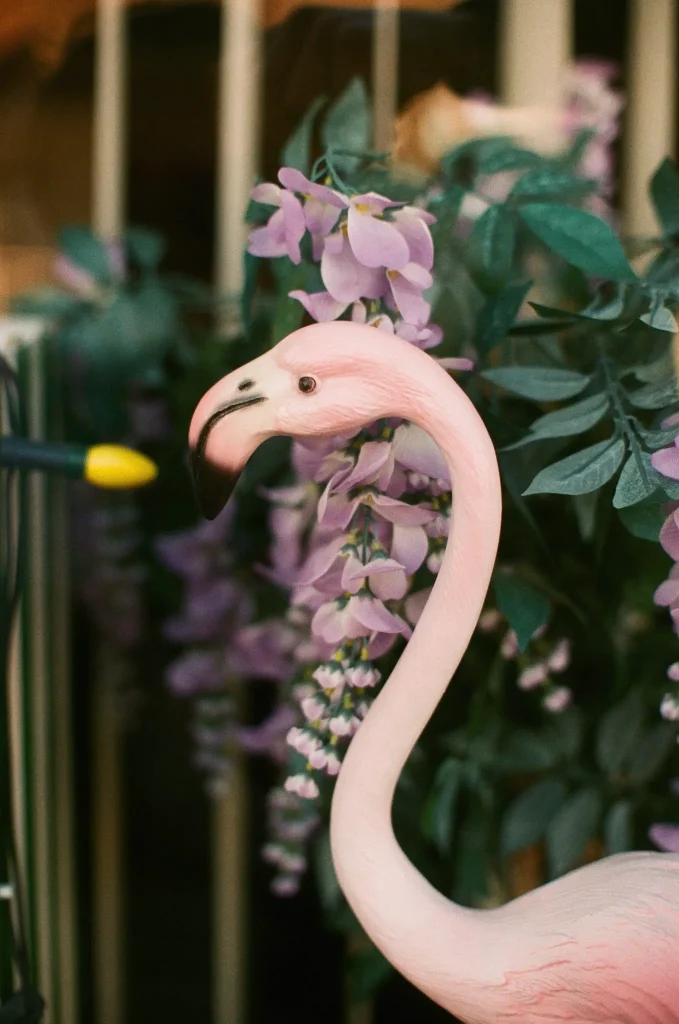
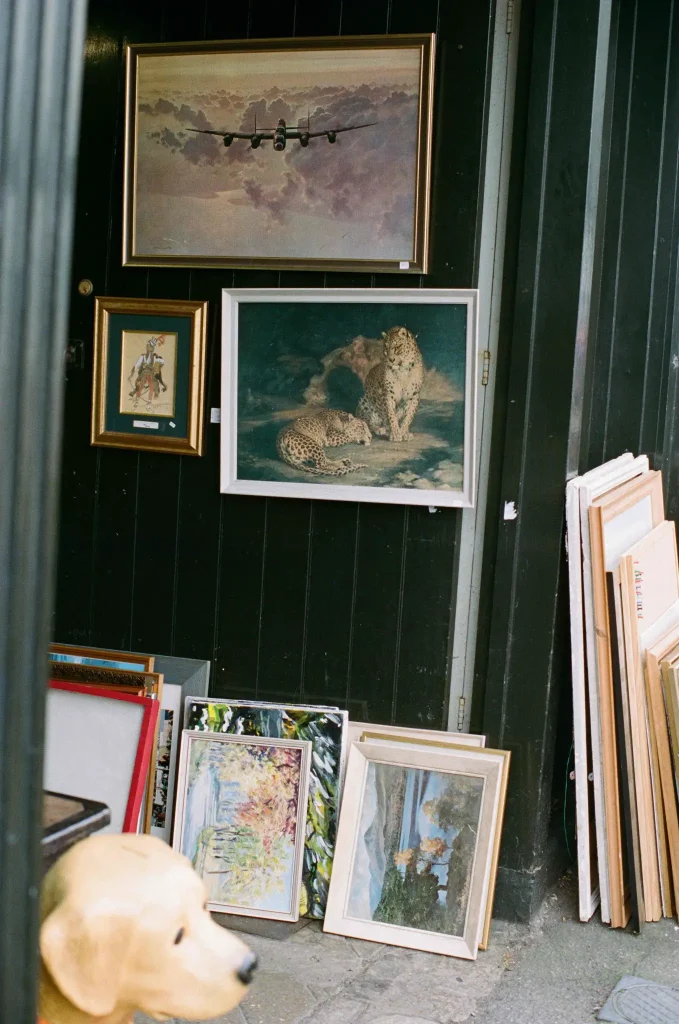
I mainly shoot on Aperture priority mode, setting my depth of field and then letting the camera do the rest. This is a camera made in 2001 that doesn’t have a single blinking light or any digital guff in the viewfinder. Don’t get me wrong- I love a hi tech display- my recently acquired Contax RTSii makes me feel like I’m in an episode of Knight Rider when I look through its 80’s digital display viewfinder but the FM3A’s match needle method is so intuitive and tactile that I never feel lost.
Exposure compensation in A mode is possible also, allowing you to further adjust shots on the fly if you feel the desire to do so..
Focusing
The Nikon FM3a comes with my favourite focusing aid- a split screen. The viewfinder is generous and clear and I can very quickly get focus and shoot. Compared to my Leica M7, I can focus a lot faster and also feel a lot more confident that I have focus because it is so clear. I love the M7 and I always feel like I’m talking it down when I discuss the FM3A but it’s simply the truth. I find that the SLR is more instinctively easy to focus and shoot with than using a rangefinder patch.
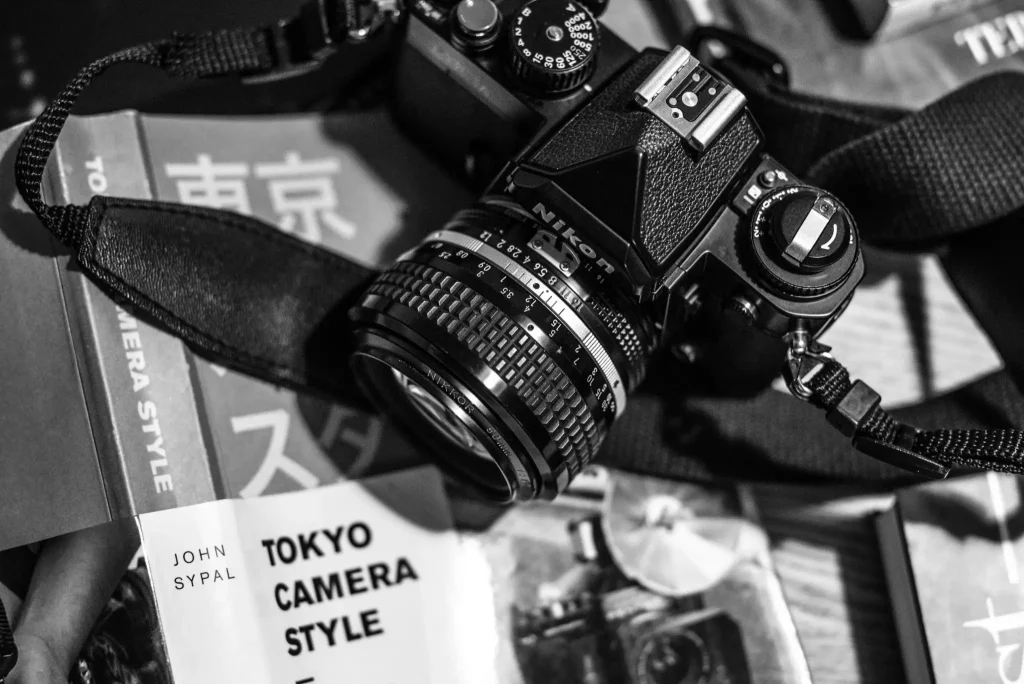
The shutter dial shows all available speeds along with an A setting that hands shutter speed over to the aperture selection
Shutter
The Nikon FM3a’s shutter is built to such a high mechanical standard that it can shot at 1/4000th of a second WITHOUT a battery. Think about that – the engineering history that’s allowed that to happen. It blows me away.
With batteries, the FM3a ‘s shutter goes into amazing electronic mode- shooting at WHATEVER shutter speed the set aperture requires- the numbers on your shutter speed dial, plus ALL the numbers in between. Which is just amazing, and also why I love the shots out of this camera. They always feel brilliantly exposed.
Flash
I don’t shoot a lot of flash on my SLRs so can’t claim to know enough about it, but just wanted to note the the FM3a has TTL OTF flash exposure control incorporated into it along with flash exposure compensation. This is apparently a big deal.
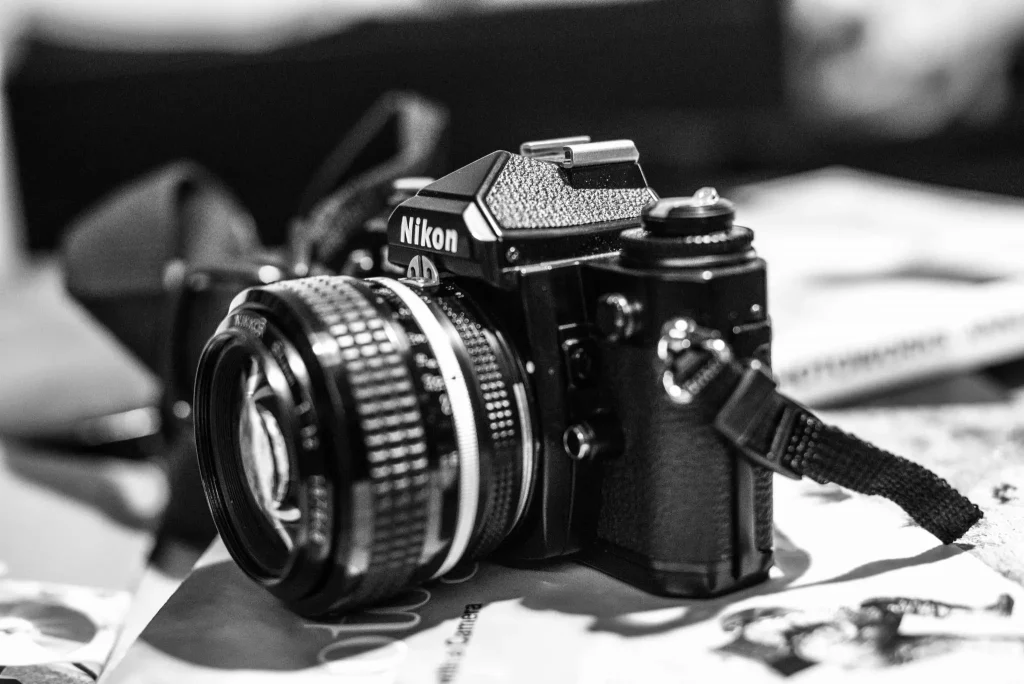
With my favourite 50mm 1.2 lens on it, this is a substantial piece of kit.
In use
Right – the important bit. What’s it like to work with?
Firstly, the Nikon FM3a body weighs 570 grammes. Not super light, but then I like a camera with a bit of heft to it. It’s a two- hander, not a one- hander like the Pentax ME super. And when I think of all the wonderful work that’s gone into it, I want it to feel substantial. When I whack on my Nikkor 50mm 1.2 ais, it takes the weight up to 940g. A solid, reassuring piece of camera. (speaking of lenses by the way, the Nikon FM3a uses Nikon’s F-mount- which gives you access to decades and decades of superb Nikon glass from the 50’s onwards. So you won’t be short of decent glass)
Feel
The Nikon FM3a feels very intuitive. Everything is where is should be. It feels surprisingly simple to look at, which is part of its appeal. There has been no attempt to show off from a design point of view- simply to allow form to follow function. The sexy bits are inside and that makes the camera exciting to me. It has no need to impress anybody, it’s the culmination of all of Nikon’s manufacturing knowledge. And it WORKS BEAUTIFULLY. The shutter wind lever is solid and smooth, all the switches and dials are chunky and have a satisfying click. I feel safe with this camera. Safe that I am using a good piece of kit and safe in the knowledge that I could smash through a brick wall with it if I was imprisoned.
Feedback
I shoot lots of street portraits and the FM3a allows me to feel confidently in control of the the 30-40 second time window I have with my subjects on the street. Whenever I’m out with the Leica M7, I always feel ever so slightly unsure of my ability to nail perfect focus because of the rangefinder , despite it always delivering the goods. But the FM3a’s split screen focus and heftier lenses that I can grab and turn as opposed to making micro adjustments on a leica thumb tab gives me a more satisfying tactile feedback. And confidence is everything in those short moments.
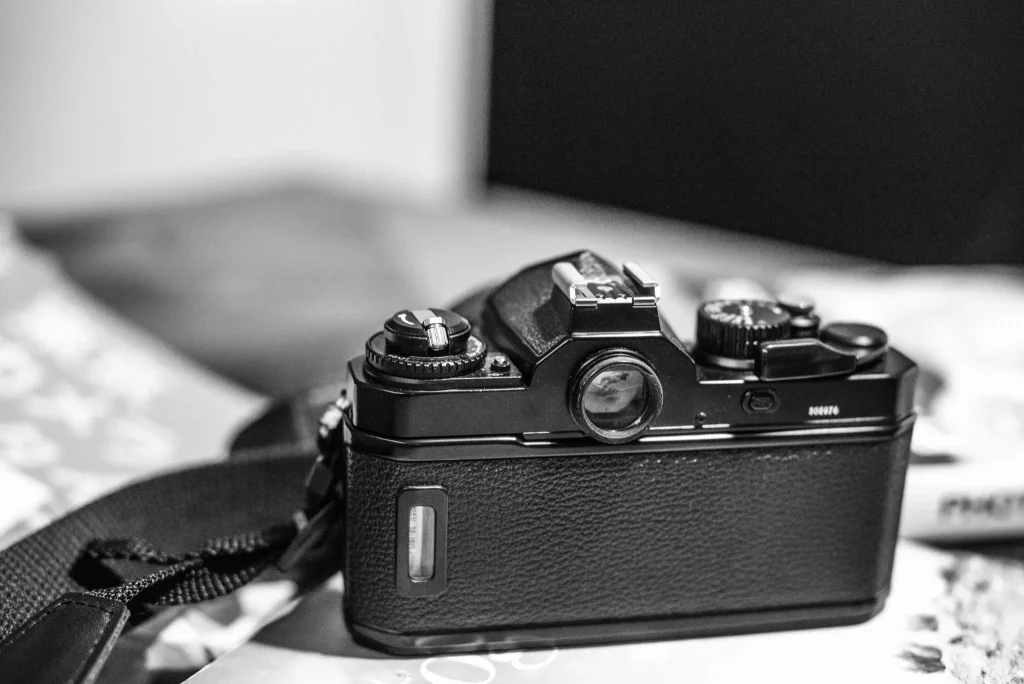
Flip the back door open (note the useful window to see what film you’ve loaded ) and slap another roll in. Off you go.
Loading
Loading a Leica M7 is a ballache. Stop. Sit down. Undo the bottom plate. Tap the film out. Open the flap. Feed new film in. Ensure it’s engaged. Tap it down. Close flap. Close bottem plate.
Loading an FM3a is easy. Carry on walking. Flip up the back door. Yank old film out. Put new film in and feed, wind on a couple of turns. Close back door. Done. Note that I haven’t stopped or sat down.
I’m not Leica bashing
I ADORE my M7 , But the NIkon FM3a forces to make honest comparison between the two different ways of shooting. They are both aperture priority cameras, and when it comes to the crunch I’d get MORE from a day with the Nikon than a day with the Leica. With less faff, less worry about misloading film, and with more flexibility (M7’s top shutter speed is 1/1000th second. My Nikon’s is 1/4000th, allowing me to shoot with a much shallower depth of field in brighter light. Very useful for street portraits. Yes, the rangefinder shows me a world beyond my frame, but I don’t really need that for my portraits. The Leica does have a better shutter sound though- a low dull thud unlike the Nikon’s more pronounced mechanical click. But I can live with that.
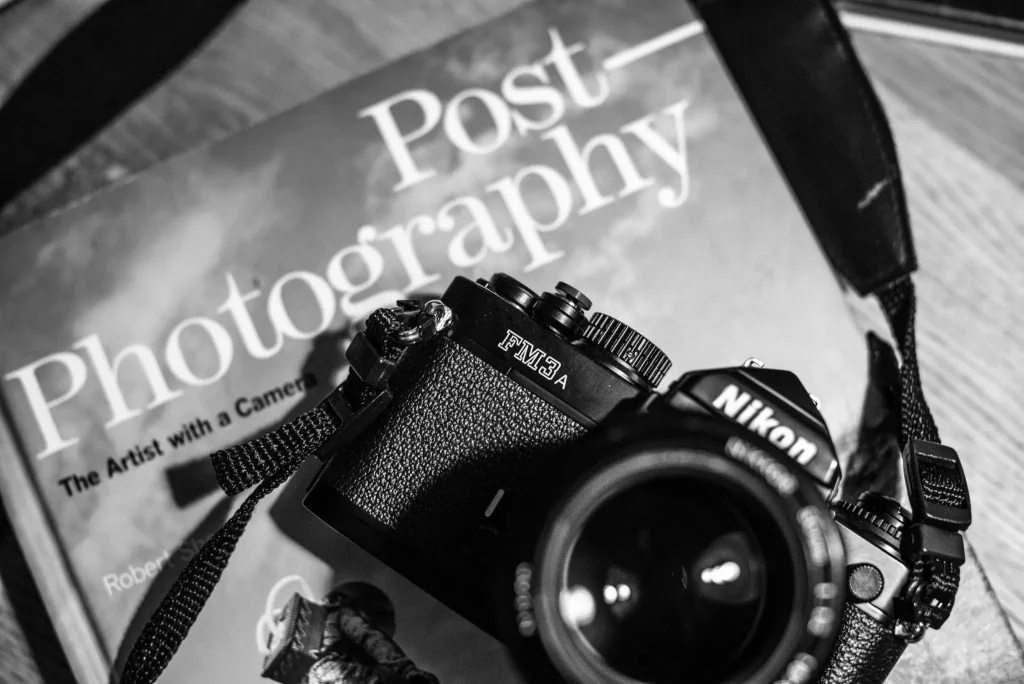
They real, simply, honestly do not make them like this anymore.
Conclusion.
The Nikon FM3a feels like it will last forever. There is nothing flimsy about its construction, but it is elegant with it. Carrying it around, I always get as many appreciative looks as I do with the Leica, and most Nikon owners always regard it with jealous eyes. I read somewhere that it was tested at -40 Celsius and worked perfectly. I can’t leave the house at -4 without longjohns and half a bottle of single malt in me so I’ll never know. But I can blather on about it to anyone who’ll listen.
And Finally…
I have an admission to make. The camera is not actually mine- it’s technically my wife’s – a Christmas present I bought for her 12 years ago in a highly drunken state, that slowly and silently made its way back into my hands. Whenever I take it out, she looks at it and gives me that “It’s still mine- you do know that don’t you?” look. And I pretend not to see it. I just focus on the feel of the camera in my hands and the wonderful shots it will get for me by the end of the day. And I pray that Jane doesn’t take up photography.
Anil Mistry is a creative director and photographer.
You can find and connect with him in the following places:
Instagram: @Anilmistryphoto
Website: http://www.anilmistryphoto.com
Facebook: https://www.facebook.com/Anilmistryphotography/
Share this post:



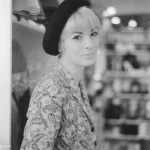


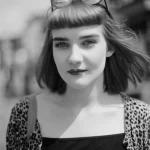
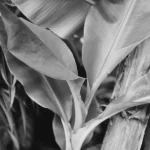
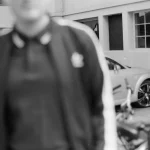
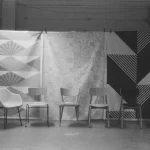
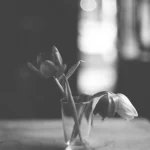
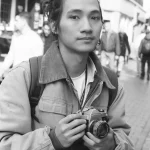















Comments
Guy Wheater on Nikon FM3a Review – My desert Island camera – by Anil Mistry
Comment posted: 10/03/2018
Comment posted: 10/03/2018
Terry B on Nikon FM3a Review – My desert Island camera – by Anil Mistry
Comment posted: 10/03/2018
Comment posted: 10/03/2018
Ashley Carr on Nikon FM3a Review – My desert Island camera – by Anil Mistry
Comment posted: 10/03/2018
I too shoot a Nikon (F and F3) alongside a Leica M2. I use to fret about which one to pick up when heading out but after realising they can compliment each other nicely I just take them both. The M2 usually wears the Zeiss ZM 35/2 Biogon and the Nikon with the (absolutely amazing) Micro-Nikkor 55/2.8.
Comment posted: 10/03/2018
Karl Valentin on Nikon FM3a Review – My desert Island camera – by Anil Mistry
Comment posted: 10/03/2018
Sadly it is still very expensive so I never bought one
If you not insist of mechanical shutter the Nikon F4 (which also works ver well with manual focus lenses)
is a cheaper pick and a joy to use too
Martin south of France on Nikon FM3a Review – My desert Island camera – by Anil Mistry
Comment posted: 10/03/2018
Comment posted: 10/03/2018
Alex Hakimi on Nikon FM3a Review – My desert Island camera – by Anil Mistry
Comment posted: 10/03/2018
ScottP on Nikon FM3a Review – My desert Island camera – by Anil Mistry
Comment posted: 10/03/2018
.
I notice that you use both Pan-F and Fuji Acros. How would you compare them? I think I like the Pan-F tones a little better, but that might be because I don't have the Acros processing zeroed in yet.
[email protected] on Nikon FM3a Review – My desert Island camera – by Anil Mistry
Comment posted: 11/03/2018
Leica click sound is one those things people use to admire, but for me it was never music really. I also keep an M7 and enjoy it, it's a good machine.
Rangefinders have their limitations that leica lovers simply avoid uderstanding. For instance plugging a telelens in them to use it for portraiture is nearly ridiculous compared to some other system, say slr, not to speak about digital tools like evf. Even so Leica launches an astonishing expensive 90 mm noctilux; probably it sounds like angels singing when turning aperture ring.
Comment posted: 11/03/2018
Comment posted: 11/03/2018
Comment posted: 11/03/2018
Des McSweeney on Nikon FM3a Review – My desert Island camera – by Anil Mistry
Comment posted: 11/03/2018
Comment posted: 11/03/2018
Comment posted: 11/03/2018
Marius Voicu on Nikon FM3a Review – My desert Island camera – by Anil Mistry
Comment posted: 12/03/2018
Very good article about one of the legendary Nikons out there. I have the FM2N and I take it everywhere with me since it is so dependable and has great glass: 50mm f/1.4 and the 28mm f/3.5. BTW, I shot with mine at -20 deg C and it worked flawlessly, no issues. Some said that the oil inside the camera might freeze and when brought to normal temperature would start to drip on the aperture blades and insides of the camera. I had no issues and it just works. You did mentioned that the FM3A is fully mechanical, but I read that the FM2 was the last fully mechanical camera (uses a battery for the meter only), and starting from the FM3 the shutter is electronically controlled. Maybe the information is not accurate from where I read, don't know. This was the thing that made me choose the FM2 and not the FM3. I wanted a fully mechanical beast, that didn't needed batteries for the main operating functions. The meter is something that I can make do without if the battery fails.
Anyway, it's on the Legendary Nikons Hall of Fame for many reasons (most of them you mentioned in this article).
Comment posted: 12/03/2018
Chris Pattison on Nikon FM3a Review – My desert Island camera – by Anil Mistry
Comment posted: 14/03/2018
Sweet camera and images Anil.
Comment posted: 14/03/2018
Pedro on Nikon FM3a Review – My desert Island camera – by Anil Mistry
Comment posted: 18/03/2018
Comment posted: 18/03/2018
Comment posted: 18/03/2018
Scott Edwards on Nikon FM3a Review – My desert Island camera – by Anil Mistry
Comment posted: 27/04/2018
I primarily shoot digital but fell in love with film again at year's end. Having fun with the F100 and my 50 1.4D, which is a really nice combo. :) Peace, brother.
Comment posted: 27/04/2018
Jacob Firsel on Nikon FM3a Review – My desert Island camera – by Anil Mistry
Comment posted: 14/06/2018
Excellant review with really enviable portraits. I picked up what seemed to be an unused one a few years ago.
I'd like to know what soft shutter release you use.
Cheers!
Comment posted: 14/06/2018
Mike Morgan on Nikon FM3a Review – My desert Island camera – by Anil Mistry
Comment posted: 27/09/2018
BenHeijermans on Nikon FM3a Review – My desert Island camera – by Anil Mistry
Comment posted: 01/11/2018
Comment posted: 01/11/2018
Steve Smith on Nikon FM3a Review – My desert Island camera – by Anil Mistry
Comment posted: 02/11/2018
I agree with everything you say about it. What I like about it, with the hybrid shutter, is the feeling that it can be used anywhere, at any time. And it has everything you want in a camera, and no more. I feel technology frequently gets in the way, and the FM3a is just pure, capable, photography. Beautifully made, no frills, much cheaper and easier to load than a Leica. Could be quieter though!
Comment posted: 02/11/2018
Film photography blogs to follow - Kosmo Foto on Nikon FM3a Review – My desert Island camera – by Anil Mistry
Comment posted: 02/04/2019
georg on Nikon FM3a Review – My desert Island camera – by Anil Mistry
Comment posted: 11/08/2019
Steve Snell on Nikon FM3a Review – My desert Island camera – by Anil Mistry
Comment posted: 14/12/2019
Thanks
AC on Nikon FM3a Review – My desert Island camera – by Anil Mistry
Comment posted: 31/01/2020
All that said, the other posters here are right; the F3 trumps them all in feel, build, handling and quality, is the one I love and is a bargain today. If I a remember correctly, if you don't shoot wearing glasses don't pay extra for the HP as the finder magnification is slightly better with the ordinary - someone might confirm or otherwise.
I have avoided mention of the F2 as that is a whole other subject!
(The MX was nice too, and I am nostalgic for it because I didn't fully appreciate it at the time and I don't have it now.)
Camera Review Blog No. 94 – Nikon FM3a – Alex Luyckx | Blog on Nikon FM3a Review – My desert Island camera – by Anil Mistry
Comment posted: 18/02/2020
Recommended reading : Down the Road on Nikon FM3a Review – My desert Island camera – by Anil Mistry
Comment posted: 05/03/2020
James on Nikon FM3a Review – My desert Island camera – by Anil Mistry
Comment posted: 22/03/2020
Nikon FM3a - Code Name: "The Last Ninja" - by Rod ZX - 35mmc on Nikon FM3a Review – My desert Island camera – by Anil Mistry
Comment posted: 07/06/2020
Khürt Louis Williams on Nikon FM3a Review – My desert Island camera – by Anil Mistry
Comment posted: 09/06/2020
Isolation Photo Project, Day 79: Blackened Catfish by Khürt Williams on Island in the Net on Nikon FM3a Review – My desert Island camera – by Anil Mistry
Comment posted: 27/07/2020
E on Nikon FM3a Review – My desert Island camera – by Anil Mistry
Comment posted: 04/01/2021
Comment posted: 04/01/2021
James on Nikon FM3a Review – My desert Island camera – by Anil Mistry
Comment posted: 14/04/2023
A beautiful ode to Nikon's last great manual focus 35mm camera. However I would like to temper your enthusiasm a little bit for this technical marvel of a camera.. Specifically on the issue of durability. Having personally owned and used every Nikon pro camera from the F to the F6, as well as less pro options such as the EM, FE and FM3a, I have to say that you will NOT be able to get out of jail with the latter. It is simply not built as toughly as even the FE, on which it is based (same body design and interchangeable parts). It is more durable than Nikon's smallest camera, the EM, but it has far from the durability of the pro cameras. The base plate is rather thin and prone to denting easily (maybe not so apparent on the black version, which has a thick coat of paint) and in operation it sounds "tinny" and not nearly as solid as the pro F's. The mount shroud and name-plate are made of plastic, which wear quickly, and on the silver version this is immediately apparent (the black versions are obviously unpainted as the plastic is already black, so again not noticable). The shutter sound is of a higher pitch than the F3, again sounding tinny. On a plus side the chrome version does not brass easily, the chrome coating being bonded to the brass and more durable than the black paint.. Although if you like your camera Brassed (anyone for a Lenny Kravitz edition Leica??) you'll definitely prefer the black version. I don't want to put down the FM3a, which is a technological marvel! It's just that you have to treat it with respect and a bit of care. No knocking out would-be assailants - you'll need an F3 for that!
Martyn on Nikon FM3a Review – My desert Island camera – by Anil Mistry
Comment posted: 24/11/2023
Great article. I have both FM3a and F6 which I dearly love. Due to airport scanner challenges with film I also have a Q2. The process of my photography is pretty similar across analogue and digital so I am blessed. The FM3a with 40mm Voigtlander is the purest photographic experience for me and if you can afford the investment it's worth it for sure.